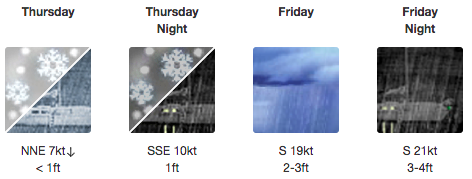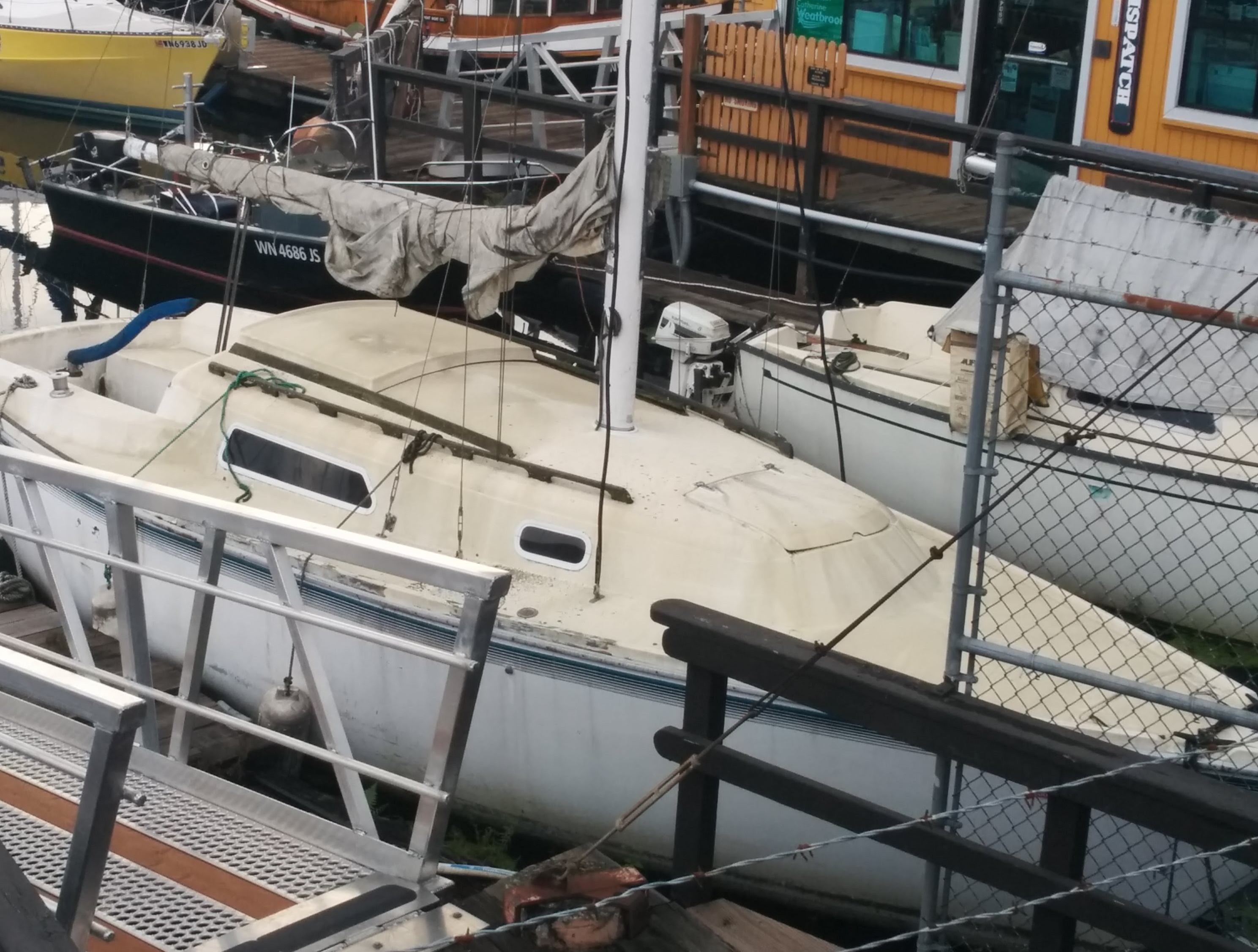When you spend a lot of time around boats, you get to noticing some peculiar things about marinas. They’re like parking lots for boats – but imagine if the cars in the parking lot never moved!
Since I got my start in boating from the Seattle Sailing Club (SSC), I figured most boats get used every week – after all, all the SSC boats did (for the most part). Or if not weekly, at least monthly right? No? Hmm. The surprising truth I eventually discovered is that most boats get used not at all, in the 8 months between September and June. And even in the 2-4 months of summer (the definition of summer depends on who you talk to), most get used weekly or monthly, but a few still don’t get used at all.

So for a while now I’ve struggled to make sense of this. We’re so fortunate to live in an area where it’s possible to cruise year-round – we don’t have to haul out and winterize our boats like people do on the northern east coast and Great Lakes.
Weather
There are two big reasons people don’t sail much in the PNW winter:
- Rain, cold, and challenging wind storms.
- Short daylight hours. At its worst, it gets dark at about 4pm (before true sunset, due to the dark, heavy cloud cover we have much of the winter). This rules out weekday sails for people who work during the day.

A NOAA marine forecast in December
These are big reasons, and I totally understand why it deters many people. Some years we have powerful weather systems moving through as frequently as every two days, and some of them you really don’t want to risk being out in – 40+ knot winds with short steep waves and cold sideways rain.
Last winter we had a 40 day period without a single rain-free day. Typical weather forecasts show a chance of rain every day of the next 10 days, every week. Yet, it usually doesn’t rain all day, and there are often short windows of nice weather in between each front.
Why Sail in the Winter?
There are lots of benefits to sailing in the winter:
- It’s the only real way to deal with cruising withdrawal.
- It’s a great way to practice sailing skills. When we first started going beyond summer sailing in Puget Sound, we found out we were great light wind sailors, but terrible heavy wind sailors.
- Using a boat keeps it in better shape than if you let it sit all winter (the diesel gets used, the sails get aired out, new things you installed during project work get tested out).
- Enjoying the outdoors is a good way to avoid Seasonal Affective Disorder (SAD).
Cruising vs Racing
If you’re a racer, that’s probably an advantage actually for getting out in the winter months. Racers typically have more than two crew for their boats, and that helps a lot with managing the high winds that can move in quickly. Racers also usually get to warm up in a cozy bar, yacht club house, or at home after the race. Cruisers anchoring somewhere overnight have the extra challenge of figuring out how to get heat and dry out rain soaked clothes.
Watching for Weather Windows
The key to still cruising in the winter is watching for those perfect weather windows. A few times every winter, we get 3 days or even a week of high pressure, with blue skies, cool but dry days, and good wind.
It’s easy to forget to watch for the weather windows though. Once the rainy weather starts, many people cross sailing off their list and don’t think of it as an option again until April. Then when the picture perfect days come along, everyone misses them. Like last October at Elliott Bay on a day with sunny blue skies and a perfect 10 kt wind, I saw only 1 or 2 sailboats go out (out of hundreds). And inside the marina it was so quiet you could hear a pin drop – there were so few people around that the blue heron was walking the docks, calmly spending minutes staring at the water before pouncing to grab a fish.

The unused boats are oddly painful to me. It’s like Jessie of S/V The Red Thread said,
“A part of me feels as if we are somehow robbing [our boat] of what she longs for most: company to seek the sea. Like the horse who longs for loving riders to free her from the corral and allow her to run spirited toward the unknowns of the horizon, does The Red Thread yearn for us to keep her lines untied?”
There are lots of reasons someone might own a boat but not spend much time on it. Yet it still makes me sad to see so many idle boats. So, here’s to getting out sailing this winter! Make the effort and you might find it’s not as tough as you expect.

How to Setup Your Boat for Year-Round Cruising
It’s not that hard to use your boat year-round – mostly it takes flexibility, and the willingness / commitment to do it. But a few things certainly make it easier:
- Dodger and/or full enclosure.
- Heat blanket. I bought a 12-volt heat blanket with a cigarette lighter plug on Amazon for Natalie. We can use it from the cockpit, or a berth.
- Cabin heater such as our diesel pot-style heater.
- Good clothing. Really good gloves especially. i don’t buy “sailing gloves”; ski or mountaineering gloves are much better.
- Easy reefing. Getting your reefing system down is more important in the winter, when you’re more likely to need it, and also don’t want to be forward on deck in the rain longer than necessary.
Despite all this, we still haven’t been getting out much more than once a month. A lot of factors have made it tough: life gets busy, and we’ve had a particularly stormy October and November this year – rain nearly every day, and fronts coming through every few days. But we’re going sailing this weekend! There’s a small craft advisory today, as a front moves through, and another one tomorrow; but it’s time to get off dock!
What techniques do you use to increase how often you get out sailing in the winter? Were there any times you went out expecting it to be terrible but it ended up being fun?

We get beautiful crisp clear cold days here in NZ in winter. Such a lovely way to spend the day floating around in the tide even if it is a bit chilly!
Patrick,
Although during Calypso’s deck and interior restoration project she has not left the slip for 2 years the co-owner and I have been on board once or twice a week during that time. We also have enough small pieces/projects at home that when we cannot be onboard we are prepping and painting boat parts small enough to travel.
We have embraced the alternate boat usage model to include the joy of boat maintenance. I view this time as pay back for the 15 years of racing and PNW cruising we did with limited down time for maintenance. Add to that deferred maintenance load, Calypso has been raced or sailed hard almost every year since 1971 on both coasts and the great lakes.
We expect to recoup our investment of time once the work cover comes off and we are able to hoist a sail or two once again and resume our pattern of “slow-pitch” racing and PNW cruising.
Martin
Calypso
1971 C&C 43
Shilshole
This weekend was a great example of how tough it can be to sail in the winter. We had a great time on Saturday, but not a very fun time on Sunday. Sunday we had to get from Kingston back to Shilshole, and a strong southerly front swept in from 7am-6pm. We tried tacking into 20 knot wind with a double reefed main and double reefed genoa, in 2-3′ waves, but our slightly tired cruising genoa doesn’t reef well and we couldn’t point higher than 60-70 degrees. The staysail would’ve been better. Settled for motor sailing, but that isn’t much fun. 🙁 At least we made it in before the wind picked up to 30 knots with sheets of sideways rain.
Thank you for the encouragement!
For people looking to ease into this, October and March can be very rewarding. We’ve done March up in the San Juans for several years and it’s been terrific. All the wind one can eat but rarely too much, empty anchorages, harbors with staff not dropping from fatigue, plenty of daylight.
One extra tip would be to test gloves for throwing lines onto winches, in haste. It’s very odd how some glove fingertips are susceptible to getting sucked in while others are not.
Winter sailing was always my favorite, though it’s also the reason (bad weather) I lost my ability to go sailing with the wife. The only folks out at that time of year are generally pretty cool (whether aboard sail or power), anchorages are rarely crowded, and neither are the islands. A diesel heater, good foulies, and neoprene gloves really help! One of my best memories was spending a couple days at anchor in Inati Bay with snow on the deck. Mostly just spent it hanging out, reading books, and baking bread.